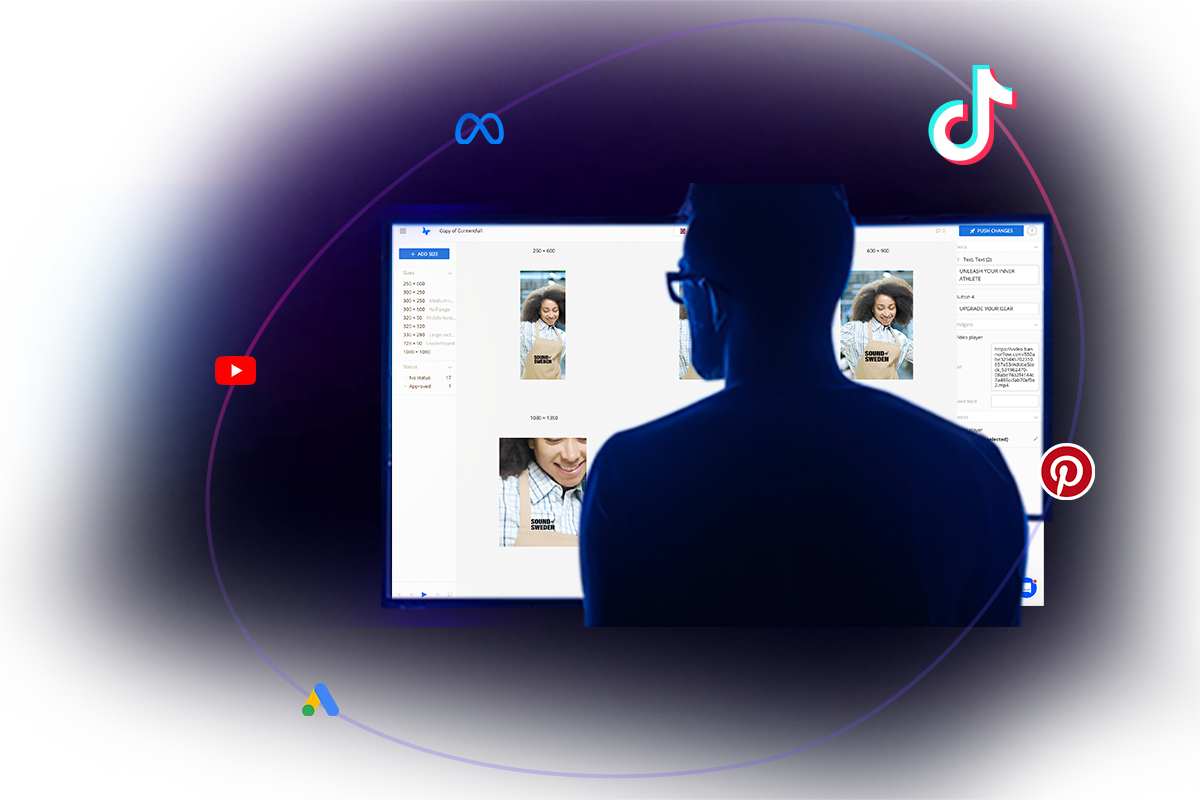Automate Your Creative Production
Have an idea in the morning and powerful digital campaigns live by the afternoon
Powering global advertising campaigns
118
billion impressions generated by Bannerflow-made ads during 2022.
2 .5
years of estimated designer time saved through automation in 2022.
1700 +
brands creating campaigns in our platform everyday.
Boost your Social Ads with an Integrated Solution
Now with TikTok included

Automate Production
Save time and produce great digital ads, at scale – effortlessly
Design ads in no time
Go from concept to 100s of variations in minutes.
Remove repetitive work
Use smart scaling to create pixel-perfect campaigns.
Collaborate in the cloud
Stay agile and get the job done, anywhere in real-time.
Cover every channel
Produce all the formats you need, including social.
Trusted by Leading Brands Worldwide





Manage Campaigns
Increase your conversions using real-time publishing, dynamic ads and creative optimisation
Work in real-time
Publish campaigns for multiple markets and update them in a click.
Distribute across channels
Integrations are available for all types of programmatic, affiliate, display, and social networks.
Use your data creatively
Drive clicks by using a range of live data feeds and dynamic options.
Automate optimisation
Stay data-driven at every stage of your campaign, from creation to conversion.
Personalise Advertising
Increase performance by tailoring ads for every persona and every market
Go beyond basic templates
Increase relevancy by only selecting and serving engaging content.
Keep costs low and ROI high
Integrations for all programmatic, affiliate, display, and social networks.
Customise your setup
Take it to the next level with connections to all major personalisation providers.
Personalise onsite content
Drive conversions onsite with impactful placements and product recommendations.


Using Bannerflow is easy and intuitive. Duplicating and editing previously made banner sets saves a lot of work time. The possibility of using your own fonts supports the desired brand look...

We usually create multiple versions of all our creatives and with Bannerflow it's super easy to manage the different versions, keeping them up to date and adjusting the messaging when necessary...

